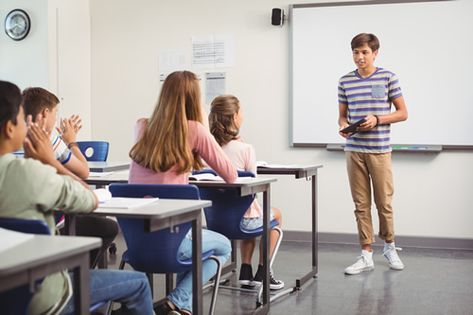Introduction:
Effective communication is essential in any organization, and schools are no exception. When educators and administrators communicate clearly and positively, everyone benefits. Teachers are more likely to share their expertise, parents feel well-informed, and students receive the support they need. Here are six ways schools can improve their communication methods for everyone involved.
1. Develop a consistent communication strategy:
Establish a regular schedule for sharing information with parents, teachers, and students. Hold weekly newsletters, meetings, or online updates to ensure that everyone stays informed about important events, updates, and announcements. Make sure the information is distributed through various channels, such as email, social media platforms, telephone calls or in person.
2. Implement a clear chain of command:
Clear internal communication is vital for smooth school functioning. Ensure that all school staff members understand the communication flow within the institution and their responsibilities in terms of sharing information with others. Establishing this hierarchy ensures better coordination and prevents potential misunderstandings.
3. Make use of technology:
Technology adoption has significantly transformed the ways we communicate today. Schools should implement technological tools to streamline the process of disseminating information among students, parents, and staff members. This may include dedicated messaging apps, online collaboration tools, virtual meetings or social media platforms.
4. Provide training programs for staff:
Ongoing professional development is crucial for improving the overall level of communication across a school system. Allocate resources for staff training programs that focus on effective verbal and nonverbal communication skills. This will not only enhance employee performance but also create a conducive learning environment for the students.
5. Encourage open and honest dialogue:
Create opportunities for open conversations between various stakeholders within the school system to strengthen relationships and foster trust. Regular feedback sessions with teachers, individualized attention to parent concerns or panel discussions involving students help bridge gaps in understanding and create a positive school atmosphere.
6. Be mindful of cultural and language barriers:
It is essential to acknowledge that schools serve diverse communities with various communication needs. Ensure that the materials shared are easily accessible and understandable to those who might not speak English as their first language or have other unique challenges. This can be achieved by providing translated documents, interpreter services, or using more visual aids to convey information.
Conclusion:
School communication plays an integral role in fostering a supportive environment for students, parents, and staff members alike. By consistently addressing the aforementioned strategies, schools can strengthen their communication skills and create a cohesive community where all stakeholders feel heard, understood, and valued.











